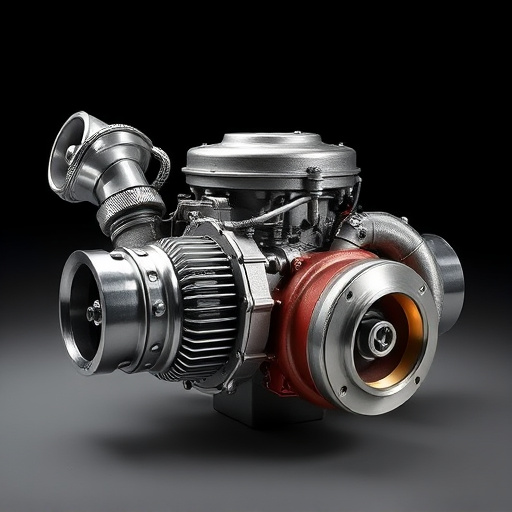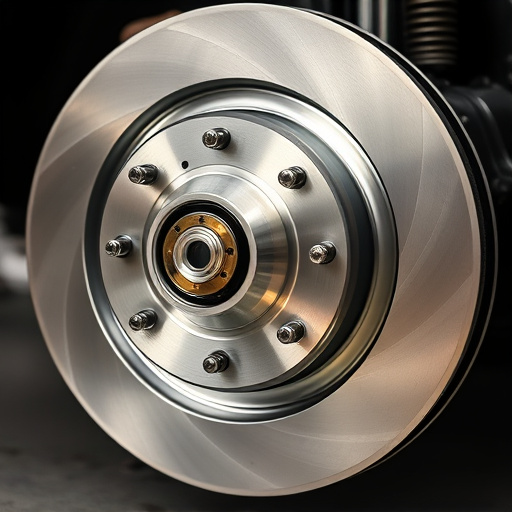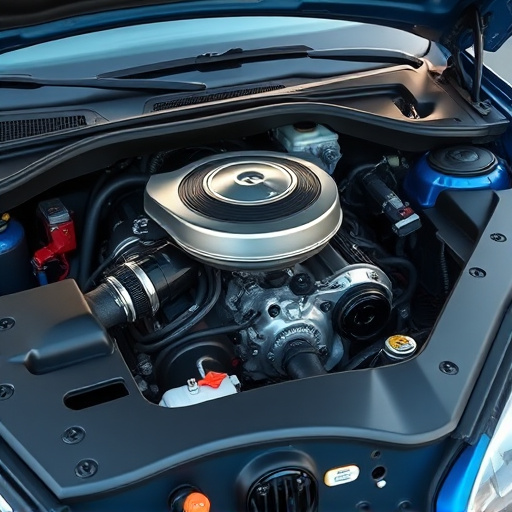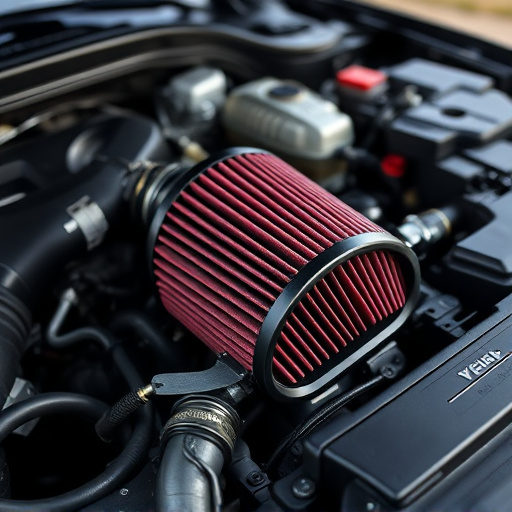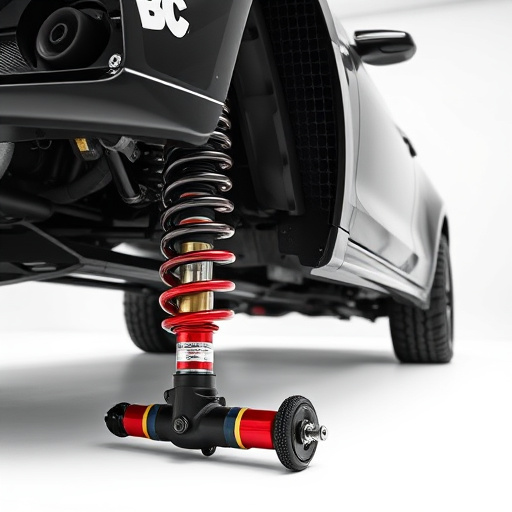Understanding your vehicle's engine basics is crucial for identifying key engine components such as the cylinder block, crankshaft, camshaft, spark plugs, and fuel injectors, which are essential for its operation. Regular visual inspections of exhaust tips, cylinder heads, pistons, valves, spark plugs, timing belts, intake manifolds, and air filters are vital to detect potential issues. Maintaining and replacing these engine components promptly is essential for vehicle performance and preventing future malfunctions. Regular maintenance of often-overlooked parts like mufflers, air filters, and suspension kits can significantly enhance vehicle efficiency, lifespan, and ride quality.
Want to unravel the mysteries of your vehicle’s power source? Learning to identify key engine components is essential for any car owner. This guide breaks down the complexities of engine basics, walks you through a visual inspection of common parts, and even points out less obvious yet crucial elements. By the end, you’ll be equipped with the knowledge to navigate like a pro technician, ensuring smooth rides ahead. Discover the key engine components that keep your vehicle humming along.
- Understanding Engine Basics: Familiarize Yourself with Essential Parts
- Visual Inspection and Common Engine Components
- Uncovering Hidden Gems: Diagnosing Less Obvious Parts
Understanding Engine Basics: Familiarize Yourself with Essential Parts
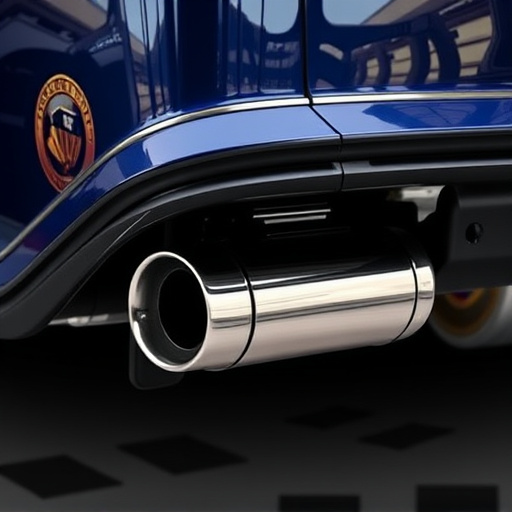
Understanding the basics of your vehicle’s engine is the first step in identifying its key components. The engine is the heart of your car, converting fuel and air into motion, so it’s crucial to know its parts and their functions. Start with the cylinder block, which houses the pistons, a vital component that moves up and down within the cylinders, compressing the mixture of air and fuel before ignition. The crankshaft, connected to the pistons, converts this linear motion into rotational energy, driving the vehicle’s wheels.
Other essential engine components include the camshaft, responsible for opening and closing valves at precise times; the spark plugs, which ignite the compressed mixture; and the fuel injectors, delivering fuel to the cylinders. Additionally, consider high-performance parts like advanced suspension components and performance brakes, as these can significantly impact overall vehicle performance and handling, enhancing both safety and driving pleasure.
Visual Inspection and Common Engine Components
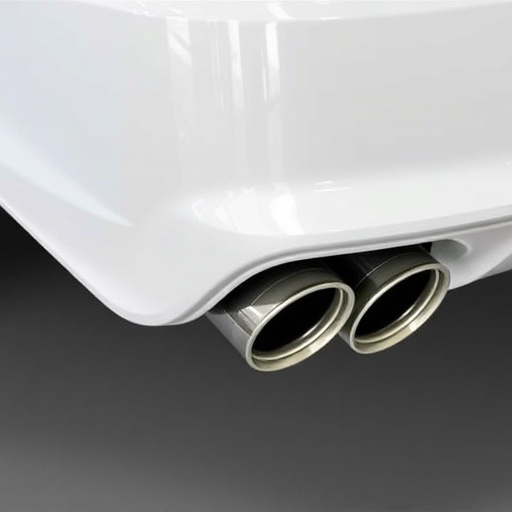
Performing a visual inspection is often your first step in identifying key engine components. Look for signs of wear, leaks, or damage to parts like the exhaust tips, which can indicate issues with the catalytic converter or muffler. Check for any visible debris or oil buildup on surfaces, as this could signal a loose connection or gasket problem. Common engine components include the cylinder head, pistons, valves, spark plugs, and timing belt—each crucial for vehicle performance.
Pay special attention to the intake manifold, which delivers air (and fuel) to the engine, and the performance air filters, designed to optimize airflow. These parts are integral to maintaining peak vehicle performance, so regular inspection and timely replacement when necessary can help prevent more serious issues down the line.
Uncovering Hidden Gems: Diagnosing Less Obvious Parts
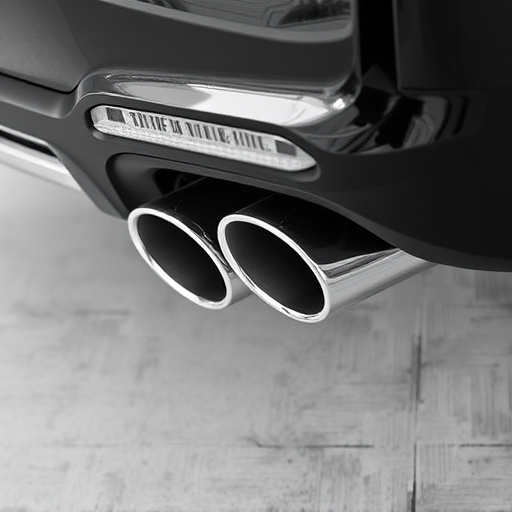
Uncovering hidden gems within your vehicle’s engine is akin to navigating a complex yet rewarding puzzle. While some engine components are readily visible and well-known, others, though less obvious, play crucial roles in your car’s performance. These can include parts like the muffler tips, which not only contribute to your vehicle’s exhaust system but also affect overall noise levels, or the air filter kits that ensure clean air reaches the engine, enhancing its efficiency. Even seemingly mundane items like suspension kits significantly impact handling and ride quality. Through regular maintenance and checking of these often overlooked areas, you can not only improve your vehicle’s performance but also extend its lifespan.
Identifying key engine components is an essential skill for any vehicle owner. By understanding the basics of engine function and performing visual inspections, you can become more familiar with common parts like pistons, valves, and spark plugs. For less obvious components, a keen eye and access to resources can help uncover their roles in your vehicle’s performance. Regular maintenance and awareness of these engine components will not only enhance your car’s efficiency but also empower you to make informed decisions about its care.








